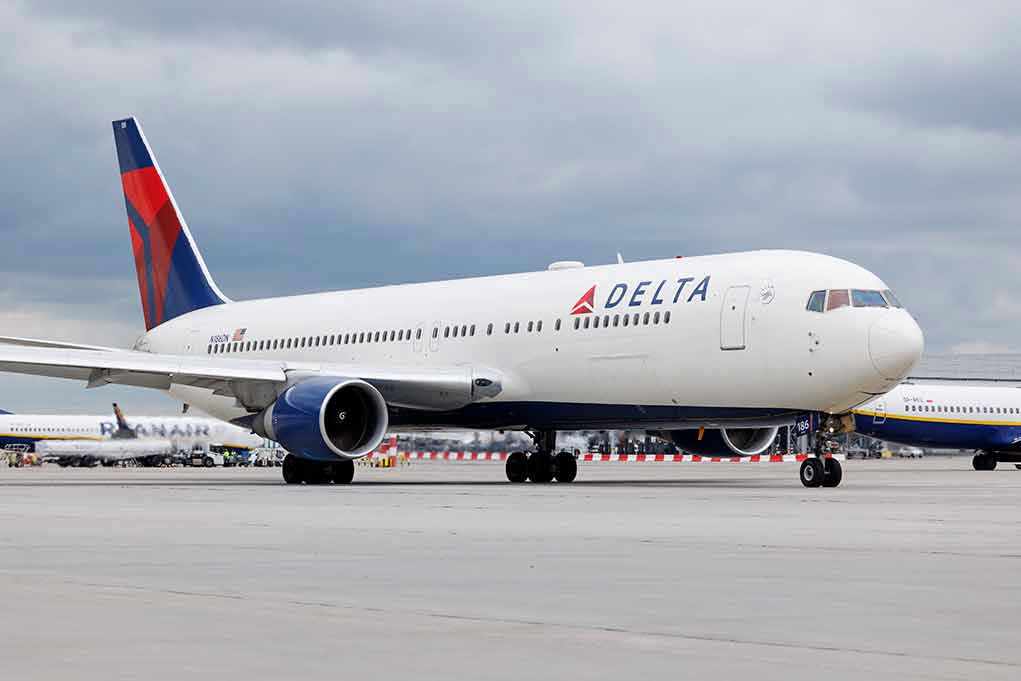
A 2,000-mile detour by Delta Flight 389 exposes the complex risks and logistical realities facing American travelers when critical crew fall ill mid-flight—raising questions about the hidden vulnerabilities in modern aviation safety and operational priorities.
Story Snapshot
- Delta Flight 389 diverted from Detroit-to-Shanghai to Los Angeles after a pilot became unwell, resulting in an eight-hour, 2,000-mile detour.
- The airline chose LAX, a major Delta hub, over the nearest airport to facilitate rapid crew replacement and maintain operational continuity.
- Passengers experienced a 3.5-hour layover but continued to Shanghai the same day, with Delta citing crew health and safety as the top priority.
- The incident underscores the importance of robust contingency protocols for long-haul flights over remote regions.
Strategic Diversion: Delta’s Decision and Its Consequences
Delta Air Lines Flight 389, operating an Airbus A350, departed Detroit for Shanghai in August 2025 but was forced off course near Juneau, Alaska, after a pilot suddenly fell ill. Instead of landing at the nearest available airport, Delta’s operations team and flight crew decided to reroute the plane 2,000 miles south to Los Angeles International Airport, one of the airline’s major hubs. This choice resulted in an eight-hour detour, extending the total journey time to over 12 hours. The airline’s rationale centered on leveraging LAX’s robust crew and support infrastructure, allowing for a swift crew replacement and minimizing further disruption for the 200-plus passengers aboard. The LAX landing occurred at 1:08 a.m. local time, and after a 3.5-hour layover for crew change and necessary checks, the flight continued on to Shanghai, arriving safely the same evening.
This operational decision demonstrates both the strengths and pressures in today’s commercial aviation: while safety and continuity were maintained, passengers faced significant delays and uncertainty. The use of a major hub rather than the nearest airport highlights a calculated risk—balancing immediate medical needs with the logistical realities of international travel and available resources. Such a decision, while disruptive, can be seen as a prudent move by an airline seeking to avoid stranding a widebody aircraft and hundreds of travelers at a remote or poorly equipped airport, especially with global crew shortages and the need for highly specialized personnel. Delta issued a public apology for the inconvenience, emphasizing that passenger and crew safety would always supersede scheduling or cost concerns.
Background: Rare Event, High Stakes
Mid-flight diversions due to crew illness are rare but not unprecedented, particularly on long-haul international routes over remote regions. Airlines like Delta typically invest in contingency planning and crew health protocols, but when a critical team member becomes incapacitated, the decision-making process becomes a high-stakes exercise. In this case, the northern Pacific route offered few suitable diversion points, and LAX’s status as a Delta hub with available relief crew and technical support made it a strategic—if costly—choice. Previous incidents involving Delta and other carriers most often involved mechanical or unruly passenger situations, and rarely has a flight diverted so far off course solely for crew health reasons. This event stands out for the scale of the detour and the operational complexity involved in ensuring a safe, timely continuation to the destination.
The crew’s actions, supported by Delta’s operational command and air traffic control coordination, reflect the intricate web of relationships and responsibilities in aviation. The captain, affected pilot, and ground teams made rapid decisions under pressure, prioritizing health and regulatory compliance. Passengers, though delayed, benefited from clear communication and ultimately reached their destination on the same calendar day—a testament to the airline’s crisis management protocols. Such incidents inevitably raise concerns about the adequacy of crew health screening and the robustness of international travel logistics, especially in an era where global disruptions and regulatory scrutiny are increasingly common.
Industry Impact and Lessons for the Future
This event immediately impacted the passengers and crew involved, but it also reverberates through the broader aviation industry. In the short term, travelers faced inconvenience and Delta incurred additional costs related to fuel, crew, and operational delays. However, the incident reinforces the critical need for robust contingency planning, particularly on long-haul flights traversing remote or sparsely serviced airspace. Experts note that the strategic use of hub airports for diversions minimizes operational chaos and ensures swift crew replacement, but it requires precise coordination and real-time decision-making. The airline’s prioritization of crew health and operational safety over cost or schedule aligns with industry best practices, though some commentators argue that passengers deserve greater transparency and perhaps compensation in such scenarios.
Long-term, the Delta 389 diversion will likely inform future protocols, both within the company and industry-wide. Airlines may invest further in pre-flight health screenings, simulator training for medical emergencies, and strategic planning for potential diversions on critical routes. For American travelers, the incident is a reminder of the complexities and unpredictabilities inherent in international travel, particularly as the aviation sector continues to adapt to new risks. While this episode did not spark regulatory changes or political fallout, it underscores the importance of operational resilience and the ongoing challenge of balancing passenger convenience with uncompromising safety standards.
Delta flight takes 2,000-mile detour after pilot fell ill — adding 8 hours to journey https://t.co/I8QQqxBtha
— ConservativeLibrarian (@ConserLibrarian) September 1, 2025
Ultimately, Delta’s handling of Flight 389’s crisis demonstrates the value—and necessity—of maintaining strong logistical networks, clear command structures, and a culture that places safety above expediency. As the airline industry faces ongoing scrutiny from both travelers and regulators, incidents like this will shape best practices and influence public trust in air travel for years to come.
Sources:
Delta Air Lines 12-Hour Detroit-Los Angeles Flight
Delta flight diverts 2,000 miles to LA after pilot falls ill
Delta Flight Takes 8-Hour Detour After Pilot Falls Ill













